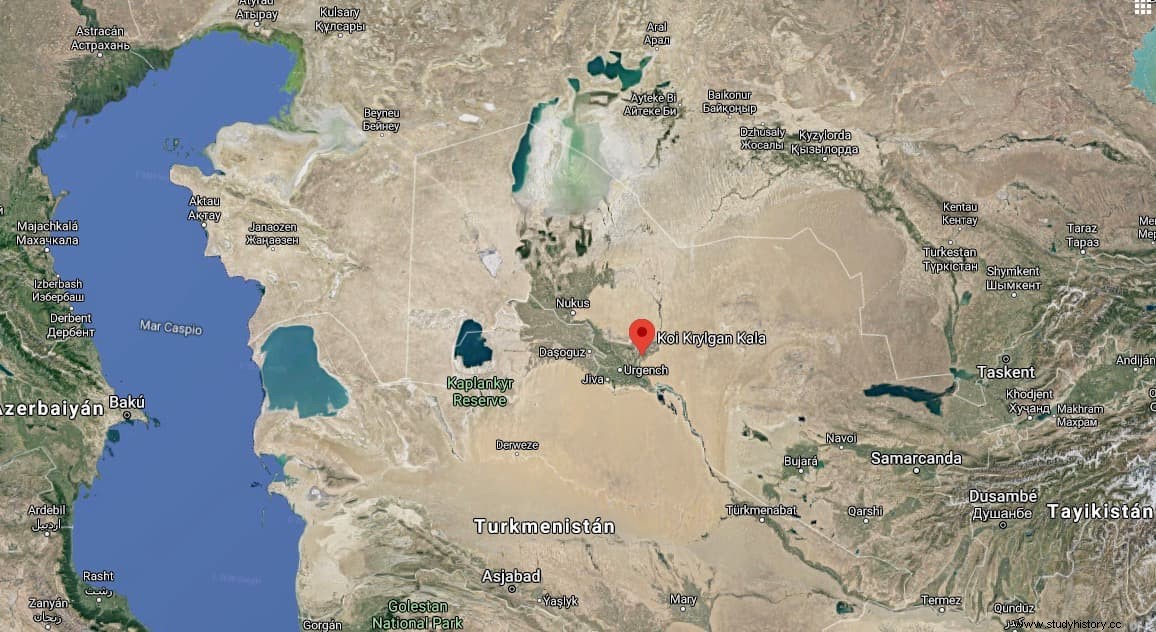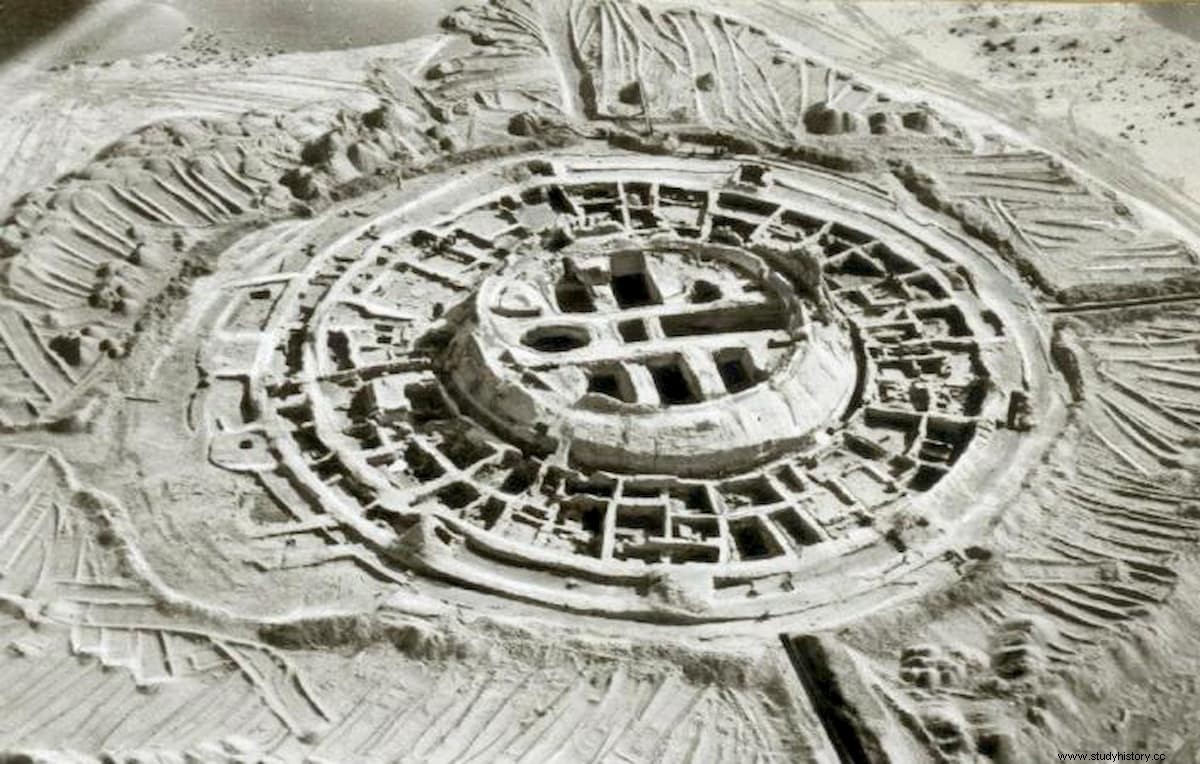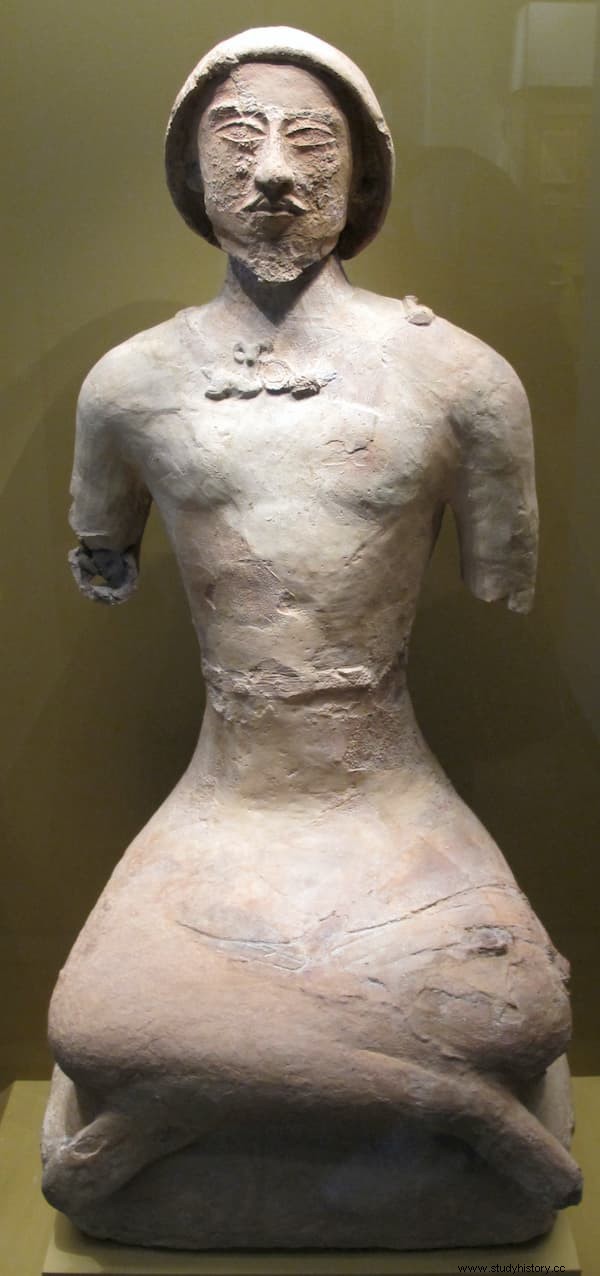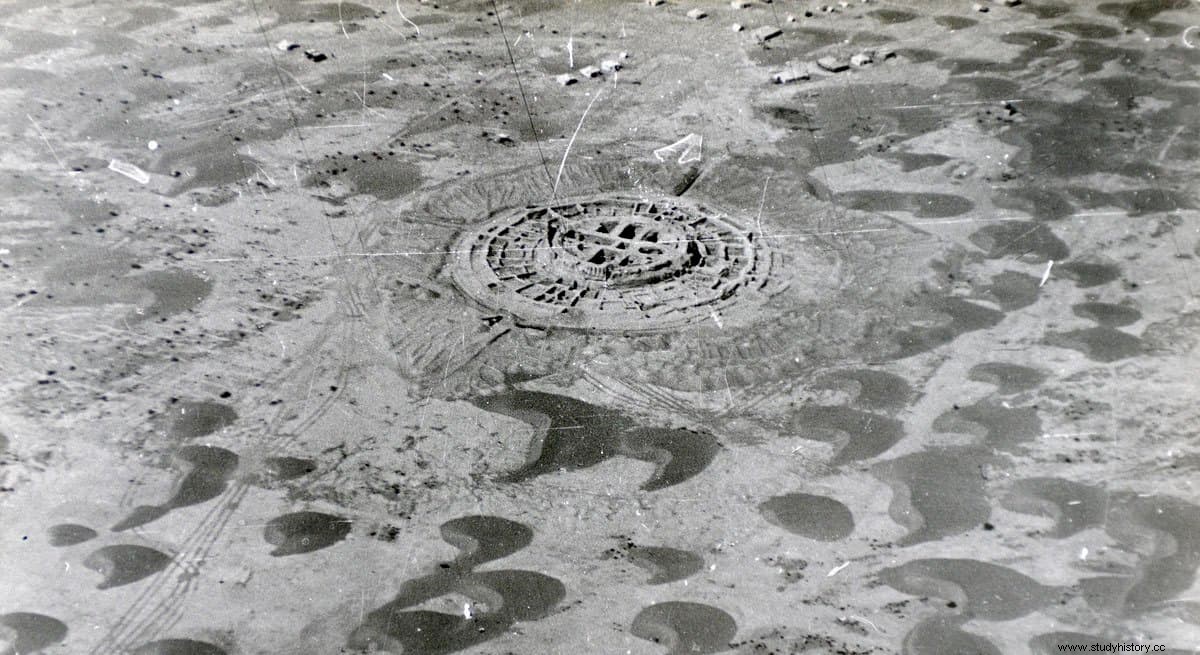In 1938, the Academy of Sciences of the Soviet Union launched the Khorasmian Archaeological and Ethnographic Expedition , under the direction of Sergey Pavlovitch Tolstov. Their objective was to investigate the Korasmia region, an area that extended from the north of the so-called Greater Iran (present-day Uzbekistan) to the eastern shores of the Caspian Sea, on the edge of the Kyzyl Kum desert.
Korasmia was already independent of the Achaemenid empire when Alexander conquered it, and his king befriended him to the Macedonian in 328 BC. Alexander's Greek and Roman biographers described him as a king of nomads ruling over an empty desert . But Soviet archaeologists found that this was not entirely accurate.

Actually Corasmia had been a kingdom of farmers, located east of the Aral Sea, and surrounded by the nomadic tribes of central Asia. A kind of oasis protected by a powerful army of armored horsemen .
The expedition discovered a kind of fortress built between the 4th and 3rd centuries BC. An amazing circular building with two floors and 9 vaulted rooms, with a diameter of 44.5 meters and an approximate height of 9.5 meters, surrounded by a circular wall 7 meters thick and with 8 towers. In the place where there should have been a ninth tower, an entrance was arranged with a walled courtyard in front of it.

Between the central structure and the perimeter wall there are remains of residential and industrial buildings. The total diameter of the structure is 87 meters. The whole place is surrounded by a moat 15 meters wide and 3 meters deep.
It is not known if the place was really a fortress, from which the centralized Khurasmite kingdom would be controlled, or some kind of religious complex. Some researchers believe that it is a Zoroastrian temple, the interior of which also served as a pantheon where the kings of Corasmia were buried. This hypothesis is supported by the fact that the central building has several underground chambers.

Other theories claim that it was an astronomical observatory, built as a result of the solar eclipse of February 29, 357 BC. The solution probably lies in a combination of all three functions.
The Koi Krylgan Kala complex is located next to the town of Taza-Kel'timinar, in the Republic of Karakalpakstan, one of the autonomous republics that make up what is now Uzbekistan.
It was excavated in the 1950s, finding numerous ceramic remains, some decorated with reliefs, and various terracotta figurines representing gods, mainly Anahita (goddess of water and fertility), and animals. Also some inscriptions written in the Khurasmite dialect of Aramaic.
From the presence of wall paintings showing a bearded man holding a bunch of grapes and a jug of wine and a woman pouring wine into an amphora, on one of the walls of the central building, the researchers deduce that the surrounding land must have been formerly a fertile wine region, with an important network of canals.
The place was destroyed in the course of the migrations of the steppe peoples, the conquest of Parthia and the Greco-Bactrian empire in the 2nd century AD. However, it seems that it was inhabited again a century later and was used until the 4th century AD, when it was definitively abandoned.

Koi Krylgan Kala is the modern name given to it by archaeologists and means fragile fortress . His real name is unknown to us. Today the entire structure, which is kept outdoors, suffers considerable erosion of its walls. The bricks of the outer enclosure have almost completely disappeared, used by local people for their own homes.
